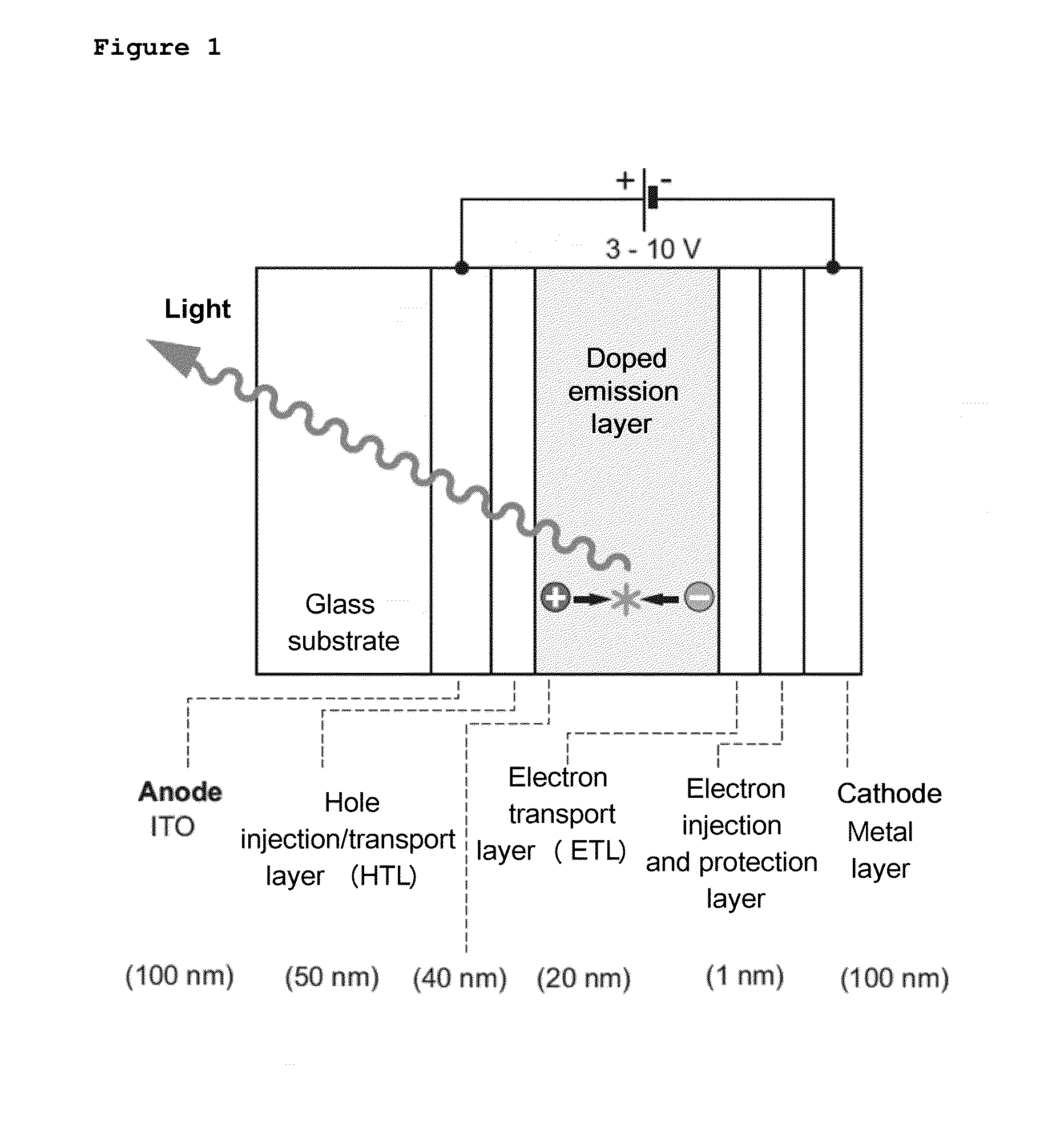Singlet harvesting with organic molecules for optoelectronic devices
a technology of optoelectronic devices and organic molecules, applied in the direction of electroluminescent light sources, chemistry apparatuses and processes, and compositions of expensive noble metals, can solve the problems of phosphorescent organometallic triplet emitters, relatively long emission lifetimes, and in the region of a few microseconds
- Summary
- Abstract
- Description
- Claims
- Application Information
AI Technical Summary
Benefits of technology
Problems solved by technology
Method used
Image
Examples
examples
[0076]From the multitude of realizable organic molecules having a small singlet S1-triplet T1 energy difference, using the example of the emitters of the formulae I to III, some examples are given, these having the following properties:[0077]The materials are very good emitters.[0078]The absorption and fluorescence transitions between the S0 and S1 states are strongly allowed. Thus, the emission decay times τ(S1) are very short.[0079]The examples include molecules having emissions from the broad spectral range from the near UV to the near IR range. More particularly, it is thus also possible to realize good blue light emitters.
[0080]FIG. 3 (A to I) summarizes various examples.
[0081]More particularly, the introduction of above-listed inert additives shows that the intersystem crossing (ISC) times of the transitions between the singlet S1 and the triplet T1 of the organic emitter molecules can be drastically reduced or, correspondingly, the ISC rates can be drastically increased. For ...
PUM
 Login to View More
Login to View More Abstract
Description
Claims
Application Information
 Login to View More
Login to View More - R&D
- Intellectual Property
- Life Sciences
- Materials
- Tech Scout
- Unparalleled Data Quality
- Higher Quality Content
- 60% Fewer Hallucinations
Browse by: Latest US Patents, China's latest patents, Technical Efficacy Thesaurus, Application Domain, Technology Topic, Popular Technical Reports.
© 2025 PatSnap. All rights reserved.Legal|Privacy policy|Modern Slavery Act Transparency Statement|Sitemap|About US| Contact US: help@patsnap.com



